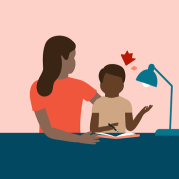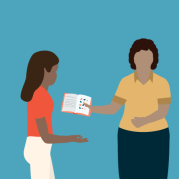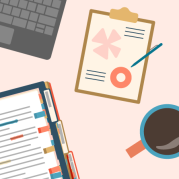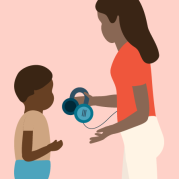Accommodations: What they are and how they work

Expert reviewed by Meghan Casey Whittaker, JD
Quick tips on accommodations
- Quick tip 1Identify the barrier.
 Identify the barrier.
Identify the barrier.An accommodation is a change that removes a barrier to learning or getting work done. First identify the barrier. Is it a loud room, written text, lack of structure, or something else?
- Quick tip 2Get ideas from others.
 Get ideas from others.
Get ideas from others.Not sure what specific accommodation to use? Find out what others with similar challenges use. For instance, people with dyslexia often use grammar checkers and spellcheck.
- Quick tip 3Don’t hesitate to ask.
 Don’t hesitate to ask.
Don’t hesitate to ask.Many classroom and workplace accommodations are inexpensive and simple to provide. But without a request, a school or an employer might not put them in place.
- Quick tip 4Know the law.
 Know the law.
Know the law.There are laws that require schools, workplaces, and others to provide equal access to people with disabilities. They have a legal right to reasonable accommodations.
- Quick tip 5Change what’s not working.
 Change what’s not working.
Change what’s not working.If an accommodation isn’t helping, it might be time for a change. Accommodations are flexible. You can adjust them to different needs.
People who learn and think differently often face barriers to learning and getting work done. But schools, workplaces, and society can make changes to remove these barriers so everyone can do their best work.
These changes are called accommodations. In many cases, accommodations are legally required to give equal access to people with disabilities.
Accommodations don’t change what students learn in school. Nor do they change what job responsibilities people have. They change how people learn and how people get their work done.
Accommodations also don’t change the expectations for performance. They simply offer support to account for challenges.
For example, students might get extra time to read through a word problem. But they don’t get fewer problems or easier ones. And they still must take the same exams and finish the same assignments as other students.
It’s similar in the workplace. Employees might get a written list of tasks with deadlines. But they must still complete the key responsibilities of the job.
Dive deeper
Types of accommodations
Accommodations work best when they target a specific barrier or challenge. Here are four types of accommodations that address different needs.
Presentation: A change in the way information is presented. Example: Audiobooks for people with reading challenges.
Response: A change in the way people complete assignments or work. Example: Keyboards for students who struggle with handwriting.
Setting: A change in the learning or working environment. Example: Quiet test rooms for students with ADHD.
Timing and scheduling: A change to the time for a task. Example: Extra time on homework, or flexible work hours.
Need ideas? Check out lists of common classroom accommodations and workplace accommodations.
Accommodations vs. modifications
You may hear the term modification. An accommodation is different from a modification.
With an accommodation, expectations are the same. What a person is expected to know, learn, or do doesn’t change.
A modification, on the other hand, changes what a child learns in school and what a worker does in a job.
For example, a modification may be to have a student do lower-level math. Or an employee may get lighter work duties because of an injury. It’s important to only use modifications when truly necessary. That’s because they can lower expectations for people.
Learn more about the difference between accommodations and modifications.
For parents and caregivers: What to do next
If you think accommodations would help your child in school, talk with the teacher. Often, teachers will agree to simple changes without any paperwork. For example, moving your child’s seat to a quiet spot with less distraction.
For bigger changes, you may need to seek formal accommodations. Under federal law, kids with disabilities — which can include learning and thinking differences — have the right to accommodations.
Start by asking the school to evaluate your child. The evaluation can lead to an IEP or a 504 plan, with accommodations written into the plan.
Accommodations may also be available in other settings, like summer camp, sports, and even at Disney World.
For educators: What to do next
As a K–12 educator, you may be called on to provide accommodations for your students. It’s important to be able to explain to families what these are and how they work. Knowing the different types of accommodations will help you support students.
Two challenges when partnering with families are selecting the right accommodations and keeping track of how they’re working. Another hurdle is implementing them in a busy classroom. Learn more about how to use accommodations when teaching.
If you teach or work for a college, reach out to your disability services office to find out how your school handles accommodations.
If you need accommodations: What to do next
The steps for getting accommodations depend on where you want them.
If you’re in high school, your parent or caregiver and the school will decide on accommodations. But you can get involved. Ask your parent or a teacher how.
In college, it’s different. You have to take the lead on getting accommodations. You can start the process by registering with your college disability services office.
Outside of school, you may have a legal right to reasonable accommodations for a disability. Again, it’s your responsibility to ask. You can seek accommodations at work, and in other areas like driver’s tests.

